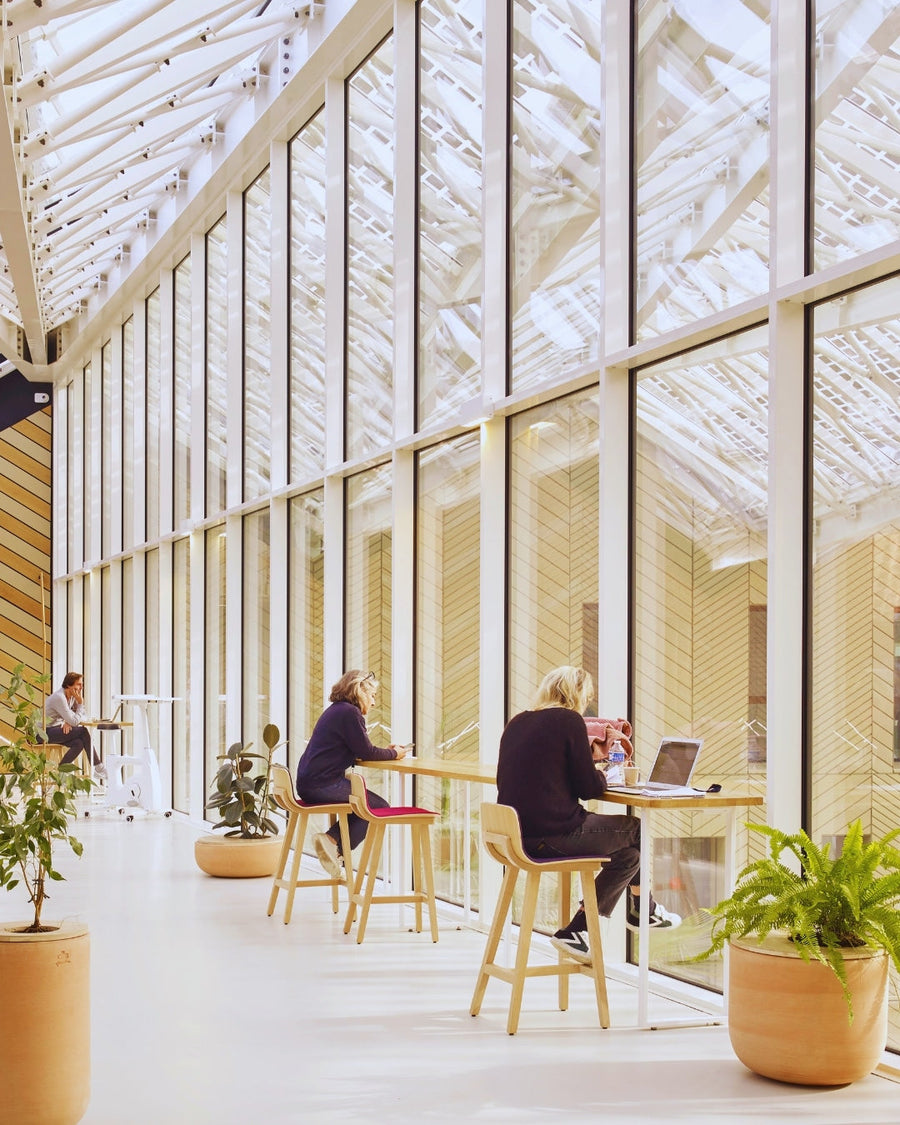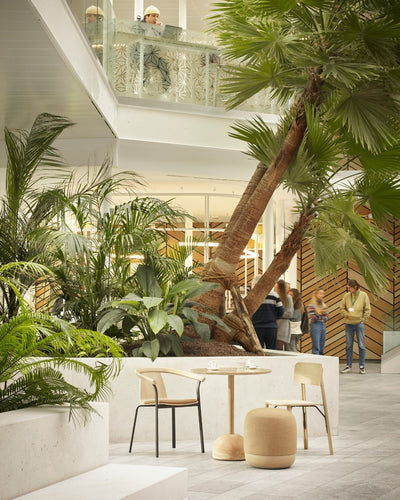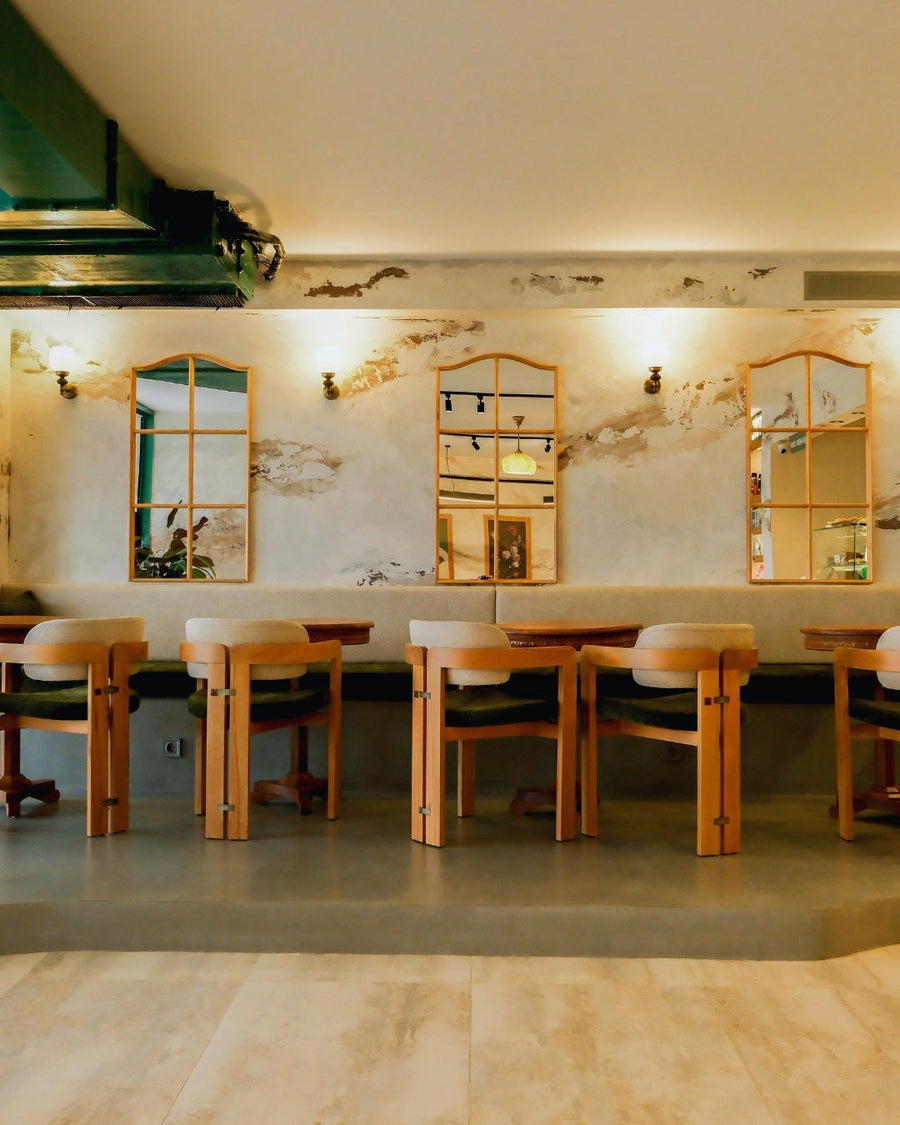Introduction
A comfortable workspace isn't just about a good chair. It's a discreet but powerful ecosystem that influences how we think, interact, and create. It shapes the energy of a day, the dynamics of a team, or the quality of a break.
Furniture is not just for sitting: it supports (or hinders) concentration, it soothes (or attacks) attention, it inspires (or neutralizes) the desire to stay. It can be an invisible aid or a tangible obstacle.
Coworking space managers, restaurateurs, architects, individuals working remotely, and home-based entrepreneurs all ask the same question. How do you choose furniture that's functional, aesthetically pleasing, durable... and adaptable to changing lifestyles?
If you're unsure, you've come to the right place. Novinea shares with you the essential guidelines for making the right, beautiful, and conscious choices. And ones that will make you want to settle down for real.
1. Does comfort rhyme with ergonomics?
Yes, but it would be reductive to stop there.
Ergonomics is a basic requirement. A good adjustable chair, a desk at the right height, and good posture are the minimum. But true comfort, the kind that lasts for hours, goes beyond these technical criteria.
It's hidden in the invisible details: the freedom to get up without being disturbed, a noise level that allows for concentration, access to natural light, breathing space in traffic. These are the little things that prevent tension, energy dips, and mental background noise.
The essentials for laying the right foundations:
-
A desk 120 to 160 cm wide, between 70 and 75 cm high
-
A height-adjustable chair with effective lumbar support
-
An indirect, soft and well-aimed work lamp
-
A secondary seat: lounge chair, bench, or even pouf, for a change of pace
Finally, the body is not made for immobility.
Varying postures, changing seats, alternating moments: this is also what an intelligent workspace is all about.
2. Adapt the furniture to your space… and your uses
A good piece of furniture placed badly quickly becomes a useless piece of furniture.
A beautiful object poorly designed for use becomes a dead weight.
Before choosing furniture, ask yourself a simple question: what will it be used for?
Every space has its constraints, its breathing space, its tensions. An open space invites modularity, a closed office calls for privacy. But beyond the form, it's the actual use that should guide the choice.
Some concrete cases to think correctly:
-
Open space : opt for modular benches, lightweight partitions, and acoustic seating that sculpt the space without enclosing it.
-
Coworking : Vary your postures. Mix standard chairs, enveloping armchairs, high seats, and benches to suit the different rhythms of the day.
-
Meeting room : Don't settle for a large table. Think about connections, long-term seating comfort, and accessibility of supports.
-
Relaxation area : play with contrasts. Mix seat heights, soft textures, and more rounded lines. Here, we inspire differently.
Good furniture is not that which is seen, but that which is forgotten because it facilitates the experience.
Encourage fluidity of use, not the accumulation of furniture.
3. Don't sacrifice style: design and ambiance at the heart of the experience
We sometimes forget that comfort begins with what we see.
Light on a raw material. A soothing shade. A line that attracts the eye without tiring it.
Furniture is not just a tool.
It's a silent signal, a visual signature.
It translates an intention, tells a posture, imprints an atmosphere.
From the first glance, it creates a framework. One in which we collaborate, reflect, welcome, and concentrate. This is why aesthetics and comfort are never in conflict; they reinforce each other.
Some principles for a fair and coherent atmosphere:
-
Limit yourself to 2 or 3 dominant materials : light wood and black metal, for example, or oiled oak and bouclé fabric.
-
Play with contrasts : between smooth seats and more enveloping textiles, between taut lines and curved shapes.
-
Focus on quality, not quantity : a few well-chosen statement pieces make more of a statement than a collection of standard pieces.
-
Work the color with precision : terracotta, midnight blue, sage green, ochre... A well-applied shade is worth a thousand accessories.
A well-designed space doesn't shout.
It breathes, it welcomes, it reflects the attention we pay to those who live there.
4. Think long term: quality, sustainability, responsibility
Furniture that wears out too quickly is never a good deal.
A table that warps. A chair that needs replacing every 18 months. A wardrobe that gets thrown away because it can't be repaired.
Disposable furniture is expensive. Not at the time of purchase. But afterward.
Hidden costs. Unnecessary waste. Degraded image.
Conversely, choosing quality professional furniture is a step towards economic, environmental and aesthetic sustainability.
The right benchmarks for making the right choices:
-
European manufacturing , for traceability, compliance with standards and working conditions, logistical proximity, and know-how.
-
Responsible materials : wood from sustainably managed forests, recyclable metal, reconditioned parts where possible.
-
Serious certifications : FSC or PEFC for wood, OEKO-TEX for fabrics, Greenguard for air quality.
-
Modular design : a replaceable screw, a repairable seat, a replaceable top. Furniture designed to last.
Thinking long term is not about freezing.
It’s about creating spaces that age well , that adapt, that retain their value over time.
5. What if you didn't buy your furniture?
Today, we no longer buy CDs to listen to music.
Why tie up capital in furniture when your needs are constantly changing?
Usage is paramount. Flexibility becomes a strategic lever.
With the Novinea furniture subscription, you can equip your spaces with designer, ethical, and sustainable furniture without spending the entire budget.
Delivery, installation, maintenance, and recovery are all included in your monthly payments. And everything is seamless.
The concrete advantages:
-
No initial investment → you preserve your cash for other investments
-
Clear and predictable monthly payments → you control your expenses
-
Scalable layout → your space adapts to your teams, your desires, your projects
-
Furniture in perfect condition → new or carefully reconditioned, always valuable
-
Reuse of existing furniture → you reduce waste and recycle your old furniture
Ease of use. Posture comfort. Management comfort.
And above all, a new way of designing the workplace: as a living, modular space, aligned with your dynamics.
Conclusion
Good furniture isn't chosen from a catalog. It's chosen in context. It's imagined in a given use. It's projected into the future.
It is neither a matter of trend nor of raw function.
It's an alchemy between what you are, what you do, and what you want to make those who pass through your spaces feel.
At novinea, we believe that furniture should accompany you, not constrain you.
This is why we designed it to be stylish, durable and scalable .
And that we make it available by subscription , without compromise or friction.
Still not sure where to start?
Tell us about your space. We'll guide you step by step.
No commitment. But with great care.
FAQ
What is the right height for a comfortable desk?
Between 70 and 75 cm depending on the user's height. An adjustable desk is ideal for shared spaces.
Should you choose an ergonomic chair or a more designer armchair?
The two are not incompatible: some models perfectly combine aesthetics and comfort of use.
How to create a warm working atmosphere?
Mix natural materials, soft lighting, deep colors and non-standard furniture.
Is it more profitable to rent your furniture?
Yes, if you want to control your cash flow, limit initial investments and develop your spaces.
What are the delivery times for rental furniture?
At novinea, delivery takes between 3 and 8 weeks depending on selection. Delivery and installation included.






